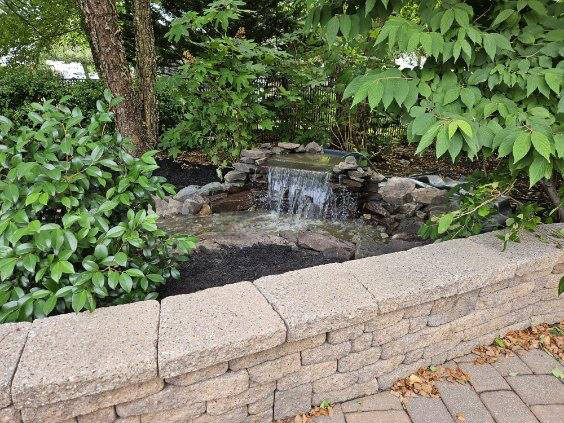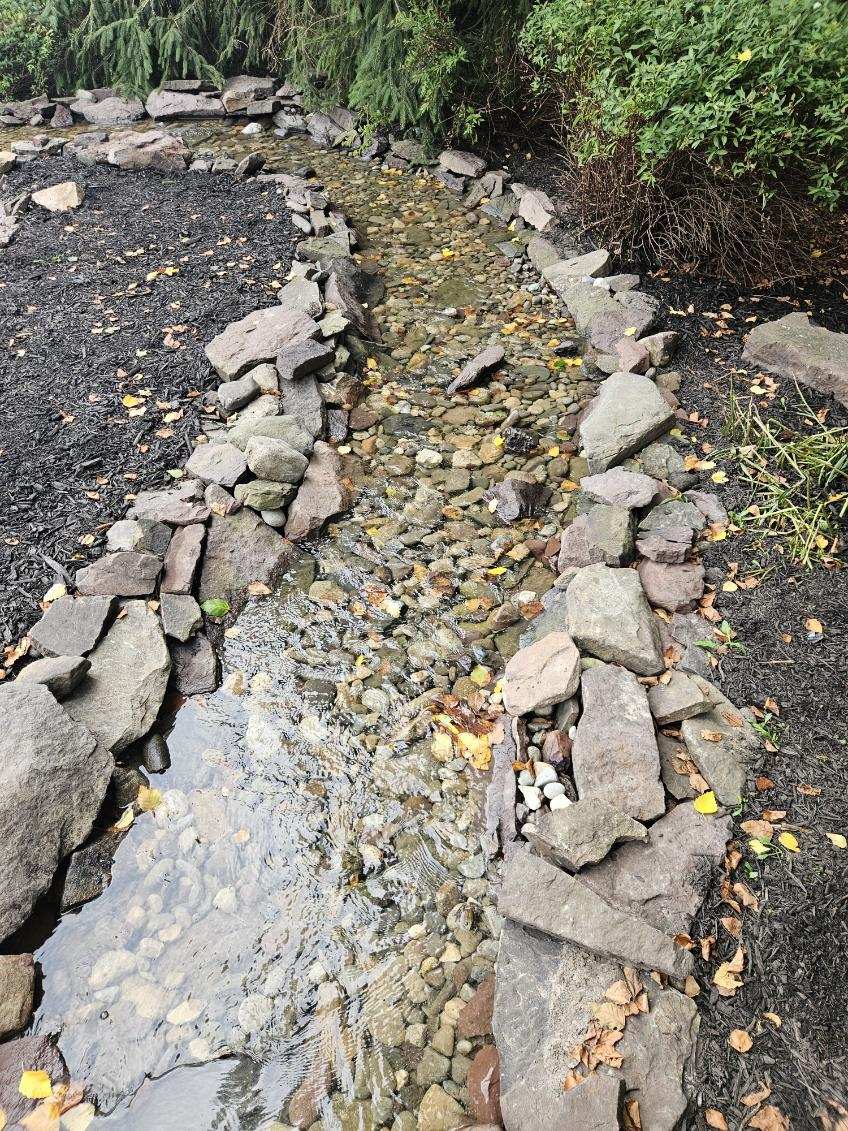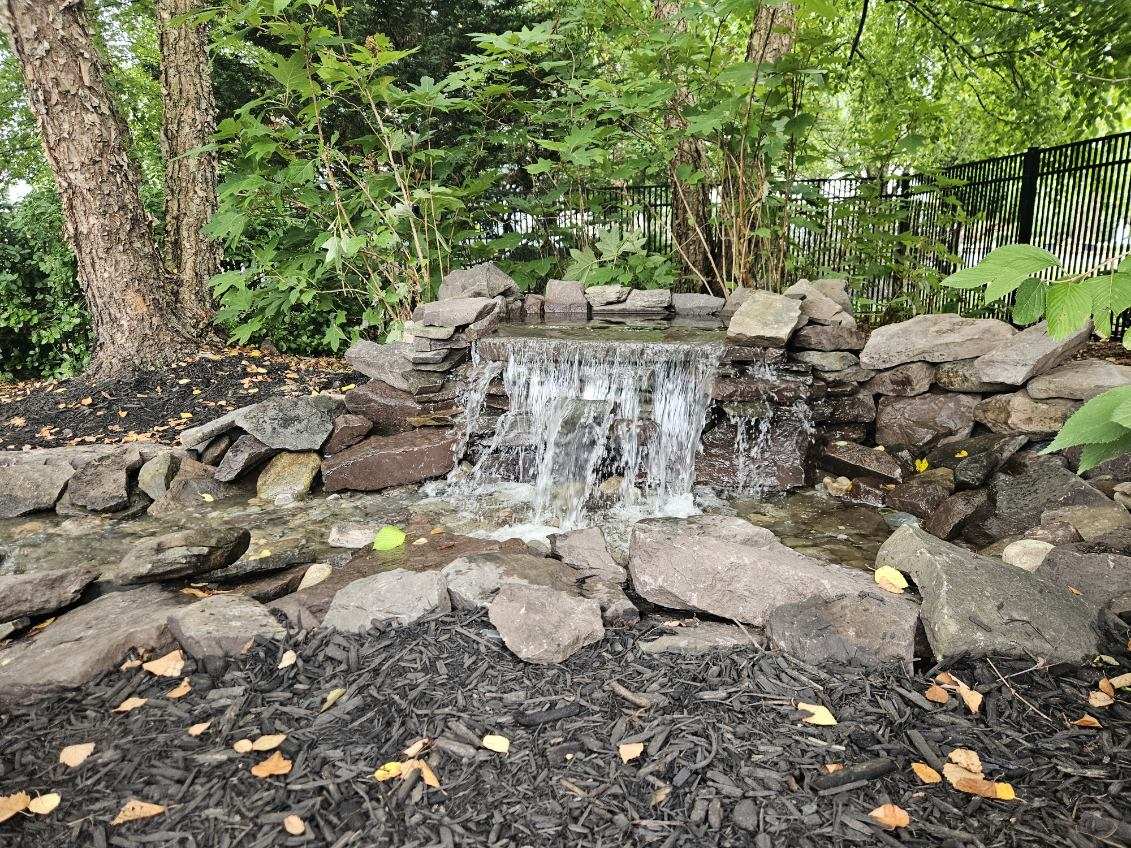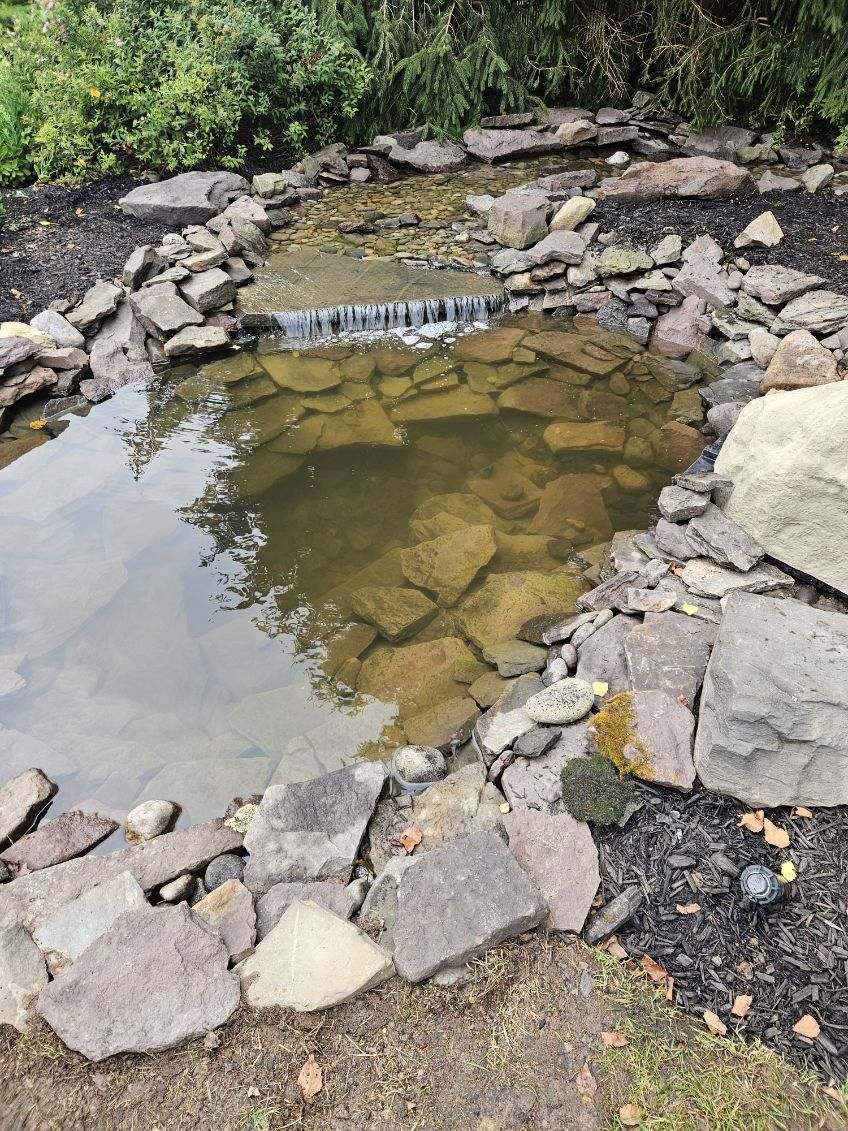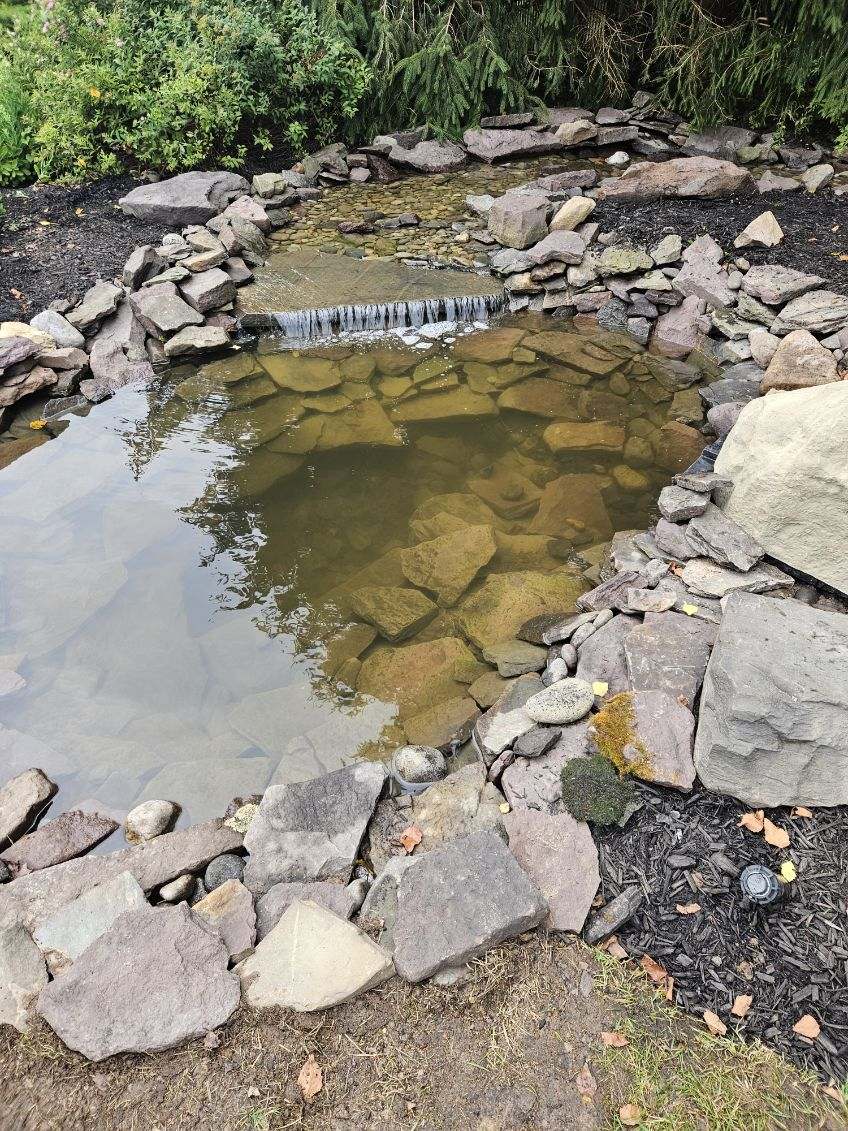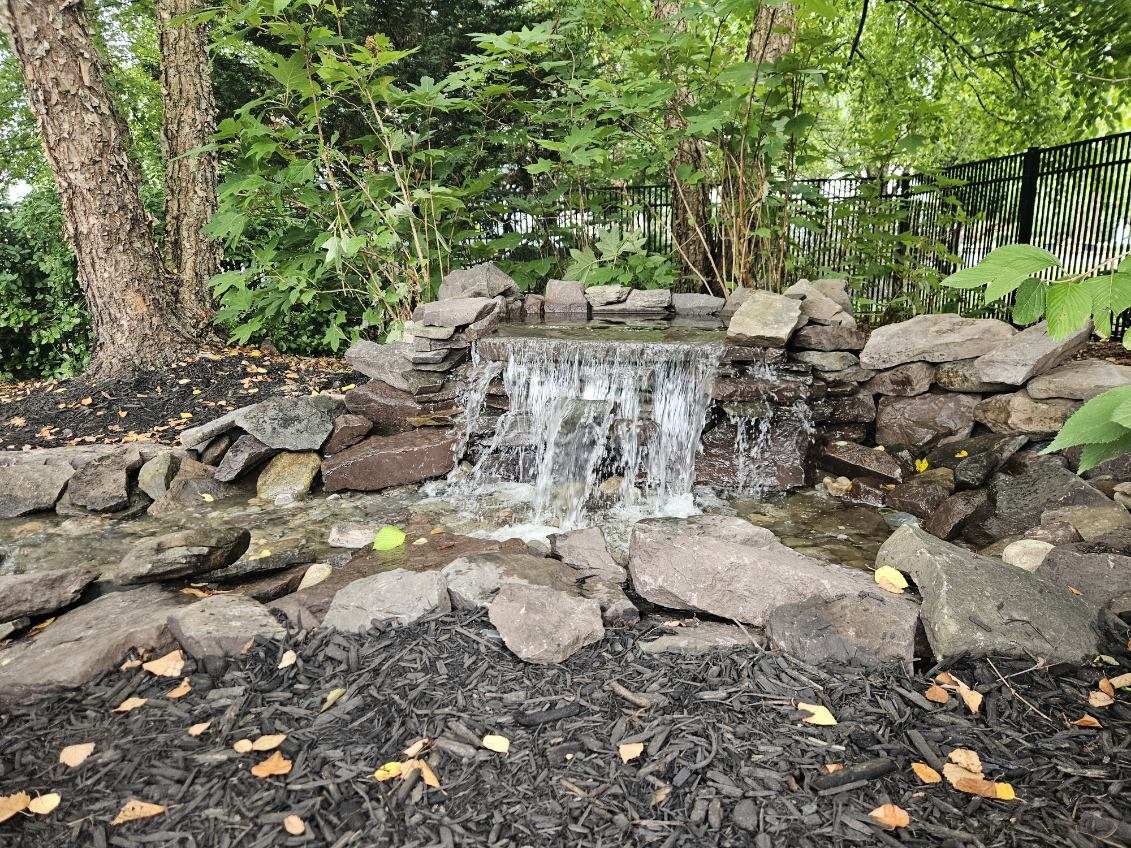POND & AQUATICS
RH Design Concepts can help create your vision for a water feature to add to your outdoor oasis. We construct and rebuild new and existing ponds, streams, and waterfalls. We can create the tranquil noise and effect you’re looking for out of a water feature—while also helping to create habitat and stunning landscapes around it. Let our team begin helping you and contact us about the installation of your pond / aquatics project!
We start the build process with excavation to widen, deepen or excavate your pond and stream, proper grading, and an EPDM high quality pond liner is installed. We will work through the environment and with your vision to achieve a natural appearance. Setting rocks and boulders becomes an artform and our team will ensure they are placed perfectly. We bring in the sand, the river rock, the boulders and all. We have worked with pond equipment manufacturers such as including Atlantic and Aquascape. From the design, to the pump, skimmer and waterfall box, to the materials and the operation, we have you covered. We strive to provide top notch service before, during and after the project—as these projects are always complex and evolving.
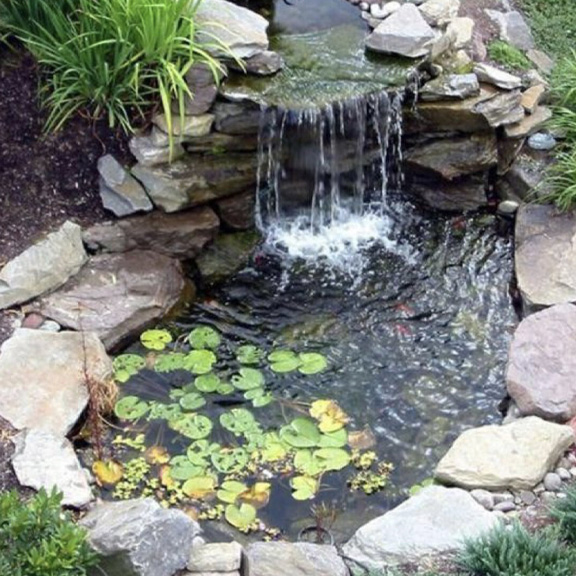
Request A Free Consultation
Complete the form below and we will schedule a time to discuss your project.
About this process
Pond & Aquatic installations can be exciting and rewarding projects that can enhance the visual appeal, aesthetics, and value of your home. With the right planning and execution of each stage of your pond and aquatic installation we also customize the project with your vision and selection. Whether you’re updating a few outdoor elements or completely transforming your outdoor space, thoughtful design, quality materials, and skilled craftsmanship are key to achieving successful results. Here’s a basic guide to our process:
We always aim to exceed expectations—at every project
- Understanding the full scope of work is crucial to correct installation
- From preparation to finish with placement—we aim to get it right
- Our team has the expertise to get the project completed successfully
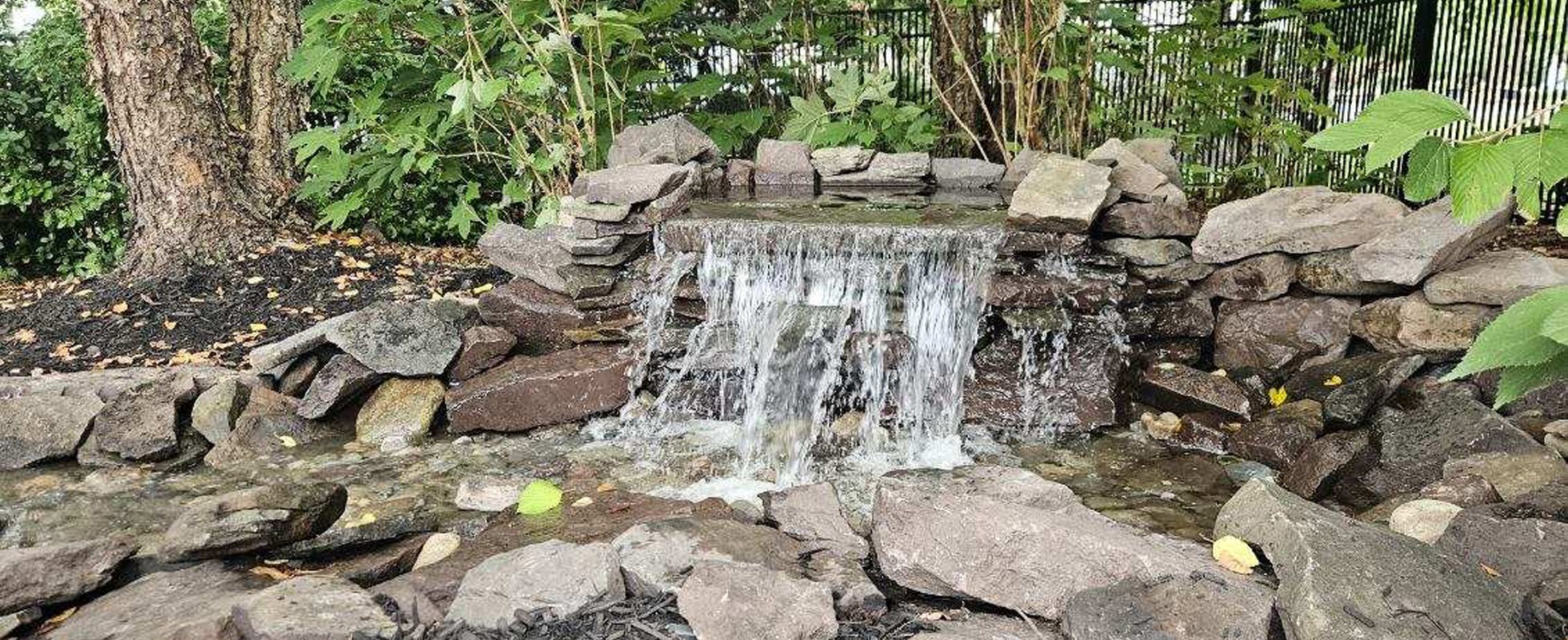
Call For a Quote:
267•733•3831
UNDERSTANDING THE SCOPE OF WORK
POND & AQUATIC INSTALLATIONS
By carefully planning and executing each stage of your pond and aquatic instllations you can create a beautiful, functional, and comfortable space that meets your needs and reflects your personal style. Installing a pond and aquatic features involves several steps to ensure that the pond is functional, aesthetically pleasing, and supportive of aquatic life. Here’s a detailed breakdown of the process:
1. Planning and Design
- Assessment:
- Site Evaluation: Analyze the location for sunlight, shade, soil type, and proximity to utilities. Consider the natural flow of water and any potential sources of pollution.
- Purpose and Features: Decide on the purpose of the pond—whether it’s for fish, plants, aesthetics, or all three. Determine the features you want, such as waterfalls, fountains, or surrounding landscaping.
- Design:
- Shape and Size: Plan the shape, size, and depth of the pond based on your preferences and the available space. Sketch the design or use pond design software.
- Materials: Choose materials for the pond liner, edging, and any additional features. Common materials include EPDM rubber liners, pre-formed liners, and various types of stones and rocks.
- Equipment: Plan for equipment such as pumps, filters, and aerators. Ensure that the equipment is suitable for the size of the pond.
- Permits and Regulations:
- Check local regulations or homeowners’ association rules regarding pond installation. Obtain any necessary permits.
2. Site Preparation
- Clearing:
- Remove vegetation, debris, and any obstructions from the area where the pond will be installed.
- Marking:
- Use stakes, string lines, or marking paint to outline the pond’s shape and dimensions. Mark the locations for features such as waterfalls or fountains.
- Excavation:
- Digging: Excavate the area to the desired depth and shape. Include deeper zones for fish to overwinter and shallower areas for plants.
- Shaping: Create shelves or ledges for aquatic plants and ensure a gentle slope for the pond edges.
3. Installation of Pond Liner and Underlayment
- Underlayment:
- Material: Lay an underlayment material, such as geotextile fabric, over the excavated area to protect the pond liner from punctures and damage.
- Installation: Smooth out the fabric and trim excess material.
- Pond Liner:
- Material: Use a pond liner material like EPDM rubber or a pre-formed liner.
- Installation: Place the liner over the underlayment, ensuring it covers the entire excavated area. Allow for extra material around the edges to secure the liner.
- Fitting: Smooth out wrinkles and ensure the liner fits snugly into the contours of the pond. Trim excess liner as needed.
4. Equipment and Features Installation
- Pumps and Filters:
- Placement: Install pumps and filters according to the design plan. Place the pump in a location where it can circulate water effectively and the filter where it can be easily accessed for maintenance.
- Connections: Connect the equipment to the appropriate pipes or hoses and ensure they are securely fastened.
- Waterfalls and Fountains:
- Construction: Build waterfalls or install fountains as per the design. Ensure proper plumbing and secure placement.
- Testing: Test the features to ensure proper water flow and operation.
5. Backfilling and Edging
- Backfilling:
- Material: Backfill around the pond liner with soil or gravel to secure the liner and support the pond’s structure.
- Compaction: Gently compact the backfill material to avoid damaging the liner.
- Edging:
- Material: Install edging materials like stones, bricks, or timber around the pond to create a finished look and help stabilize the pond’s edges.
- Placement: Secure the edging in place and ensure it blends well with the surrounding landscape.
6. Filling and Planting
- Filling:
- Water: Slowly fill the pond with water, monitoring the liner and edges for any shifts or leaks. Allow the pond to fill completely and check for any issues.
- Dechlorination: If using tap water, treat it with a dechlorinator to remove harmful chemicals before introducing fish or plants.
- Planting:
- Aquatic Plants: Add aquatic plants such as lilies, cattails, and water lettuce. Place them in the designated shelves or containers within the pond.
- Substrate: Use pond-specific plant baskets or pots with aquatic soil to support plant growth.
7. Testing and Maintenance
- Testing:
- Equipment: Test all equipment to ensure proper operation. Check the pump, filter, and any other features to confirm they are working correctly.
- Water Quality: Test the water for pH, ammonia, nitrites, and nitrates to ensure a healthy environment for aquatic life.
- Maintenance:
- Regular Checks: Monitor the pond for issues such as algae growth, debris, or equipment malfunctions. Perform regular maintenance tasks like cleaning filters and removing excess plant material.
- Seasonal Care: Prepare the pond for seasonal changes, such as winterizing the pond or adjusting equipment for summer.
By following these steps, you can successfully install a pond and aquatic features that enhance your outdoor space and provide a healthy environment for aquatic life.
Our goal is to help you!
We’re dedicated to getting your ponds / aquatics project right.
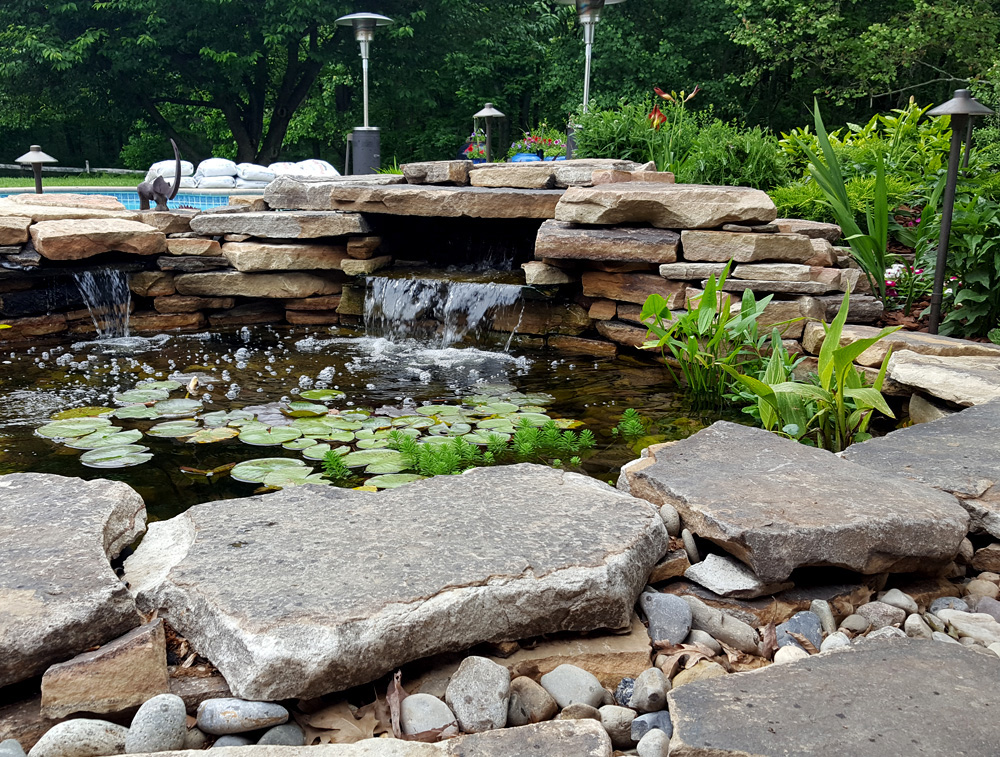
F.A.Q.
There are many different details that surround hardscaping. Our team is always happy to help you learn more about your project.
What are the benefits of having a pond or water feature?
Benefits include enhancing the beauty of your landscape, attracting wildlife, creating a relaxing environment with the sound of running water, and providing a space for gardening and outdoor activities.
What types of ponds can I install?
Common types include garden ponds, koi ponds, fish ponds, and natural or wildlife ponds. Each type serves different purposes and can be customized based on your needs and preferences.
How do I design a pond?
Start by determining the pond’s purpose, size, and location. Consider factors such as sunlight, accessibility, and proximity to trees. Design elements include the shape, depth, and features like waterfalls or fish habitats.
How do I maintain a pond?
Maintenance includes regularly cleaning the pond, removing debris, checking water quality, and ensuring that pumps and filters are working properly. Seasonal tasks involve managing algae growth, winterizing the pond, and inspecting equipment.
What should I do if my pond water is green or murky?
Green or murky water can be caused by algae or excess nutrients. Solutions include using pond filters, adding beneficial bacteria, and managing plant and fish populations. Regular maintenance and proper feeding practices can also help.
Contact Us
Always feel free to contact us about any questions you have, to setup a free consultation, or just to say hello!

